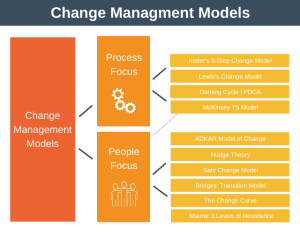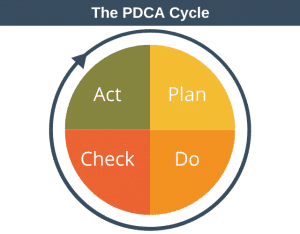Theory U is a change management model described by Otto Scharmer in his 2009 book ‘Theory U: Leading from the Future as It Emerges.’
Background
We live in a time of institutional failure, which includes: rising inequality, fake news, and the destruction of nature.
Why does it typically result in conflict and failure when we try to solve these problems?
One reason for these failures might be that we make decisions while ignoring our blind spot.
The Blind Spot
Leadership is about shaping how one or more individuals understand and then respond to a situation.
If you think about how leaders do this, you might quickly identify the two most obvious ways:
- What: the results the leader achieves.
- How: the processes and strategies they use to achieve those results.
However, there is another less obvious mechanism at play:
- Why: the inner workings that drive and direct the leader.
In athletes call the ‘why’ the mental game. This mental game has been studied, and books have been written about enhancing your mental game so you can become a better athlete.
Yet, very little is known about the leadership mental game, and it is often overlooked, which is why it is called the blind spot. According to Theory U, you need to access your blind spot to be an effective leader.
Doing this will enable you to make decisions by drawing on your past experiences and what you aspire to be in the future.
Theory U
You can think of Theory U as a journey that allows you to tap into and explore your blind spot. It enables you to let go of how things were done in the past and embrace new ideas and ways of doing things.
Theory U consists of three phases and seven capacities.
Note
You can think of each capacity as a skill (or capability) you need to develop. Capacities are often thought of as skills an individual must learn and grow, but groups can practice them too.

As you travel down the left side of the U, you overcome your own resistance, and as you travel up the right side of the U, you prototype and build out your solutions, turning your ideas into reality.
Note
The Theory U image above represents a map for a journey; hence the x and y axes are not relevant and thus not labeled.
As you can see, we have the following phases (also called spaces):
1. Sensing
The first phase of the journey is to collect information. Try to listen to people with an open mind by letting go of your preconceptions. Better yet, imagine yourself in their shoes. How do they see the problem? How do they see you?
Your aim in this phase is to open yourself up so that you can uncover the reality. Failure to truly see can often be the biggest barrier to conquering your challenges.
While this sounds simple enough, it’s difficult to do in practice as it means letting go of a lifetime of biases. To help with this, you need to develop two capacities:
Capacity 1: Suspending judgment
Suspending judgment means being aware of your personal biases and then trying to suspend them temporarily to enable you to understand in an unbiased way.
Capacity 2: Redirecting
Redirecting means being able to understand from different perspectives. For example, instead of thinking about how you see the problem, consider asking each of your team members how they see it.
2. Presencing
At the bottom of the U, you need to listen to your blind spot. You need to let go of the solutions you might want to come next (let go: your old ego and self) and allow new ideas (let come: your highest future possibility) to float into your conscience.
Presencing isn’t about attempting to have a novel idea pop into your head. Instead, it’s about arriving at a place where it’s obvious what you must do. You now see and understand the situation clearly and have 100% belief in what you must do now.
Note that presencing is difficult and will take time and practice.
Two capacities support Presencing:
Capacity 3: Letting go
Letting go means letting go of your ego and self. Maybe you have a favorite solution; let it go. Maybe you think things should have been done differently in the past; let it go. Let everything go. Leave behind everything you know and welcome the unknown.
Capacity 4: Letting come
Letting come means taking action. This is the first point in the Theory U model in which you begin to take action. Your role is to develop new ideas that are fully formed and obvious.
Two activities you can do to support presencing include meditation and walking in nature. Both of these activities allow you to step outside of yourself and see yourself as part of a larger, bigger picture.
3. Realizing
You enter this final phase with total clarity about how to proceed. You have an image of the future you want to create in your mind. You may not understand or see every brushstroke of that picture; nevertheless, you know where you want to go.
Now you need to make it a reality, starting quickly in a small way.
Realizing is supported by three capacities:
Capacity 5: Crystallizing
Crystallizing means defining your ideas and vision clearly, and it also means getting a small group of people to commit to the vision and outcomes of the project. As Margaret Mead, an American anthropologist, said, “Never doubt that a small group of thoughtful, committed citizens can change the world. Indeed, it is the only thing that ever has.”
Capacity 6: Prototyping
Theory U advocates bypassing traditional planning approaches and leaping in as quickly as possible by building quick rough-and-ready models that you can work with. Try an idea out and then evaluate it. If it doesn’t work as you hoped, change it. By failing fast and failing often, you learn more. This is better than having one massive failure on your hands later on. Prototyping helps you avoid the paralysis of inaction and analysis paralysis.
Capacity 7: Institutionalizing
To institutionalize the project, you need to scale it to the macro level. This can be done by finding the right leaders and technology to take the project forward and embed it.
Theory U In Practice
Theory U is a complex model, and it is beyond the scope of this article to give anything more than an introduction to the subject, but let’s look at a simplistic example of how you might begin using Theory U in practice.
For this example, imagine you work in a large corporation and have just been promoted to a senior leadership role. You decide to leverage Theory U to determine how best to succeed in your new role.
You begin by listening and by using the suspending judgment and redirecting capacities. To do this, you ask these questions from all of your key stakeholders and a large number of your direct and indirect reports:
- What is your most important target? How can I help you to realize it?
- What criteria will you use to assess if my contribution to your work has been successful?
- What challenges have made it difficult for people in my role previously?
Now you have a greater understanding of the issues you decide to perform your presencing by taking walks in nature while contemplating where you should be trying to get to.
Once you have gained clarity on your vision, you work to get your stakeholders bought into it.
Finally, once a core group of key people has bought into the vision, you move quickly to holding workshops so crude, but working prototypes can be iterated through. These sessions serve to get everyone moving in the same direction and deepen your relationship with your key stakeholders.
Advantages and Disadvantages
There are several advantages and disadvantages associated with Theory U, including:
Advantages
- The model gives you a mechanism to attempt to solve the major, seeming intractable, issues of our day in a win-win way.
- The model moves directly from vision to action, enabling you to take small but productive steps forward quickly.
- Unlike many other models, Theory U helps you explore the ‘self.’
Disadvantages
- The model is difficult to understand and can be challenging to use in practice.
- The process surrounding presencing is vague, without specific steps to take. Nor does it provide a mechanism to improve your presencing skills over time.
Summary
Theory U is a change management model described by Otto Scharmer, consisting of three phases and seven capacities.
Unlike many other change management models, Theory U encourages you to listen openly and deeply to the opinions of others and engage the “self” in the idea generation and selection process. The goal being that by engaging the “self,” you will know with absolute clarity which path you need to follow.
Once you know what must be done, Theory U encourages you to begin prototyping as quickly as possible.










